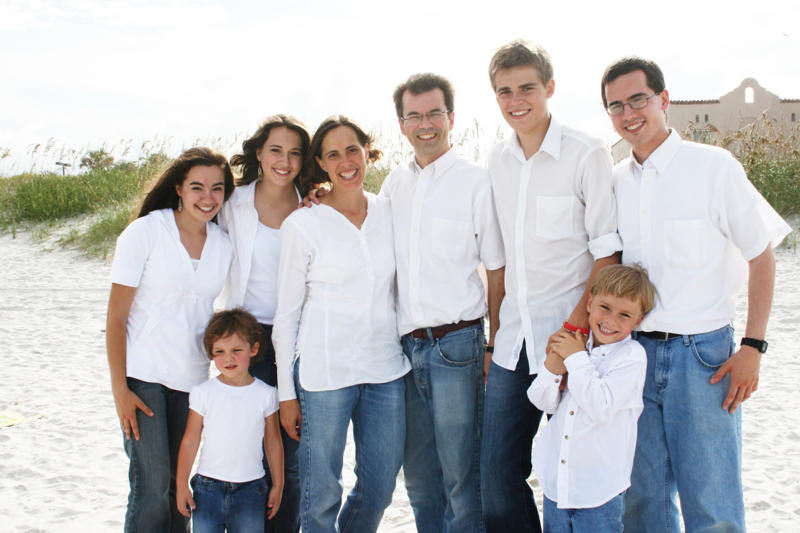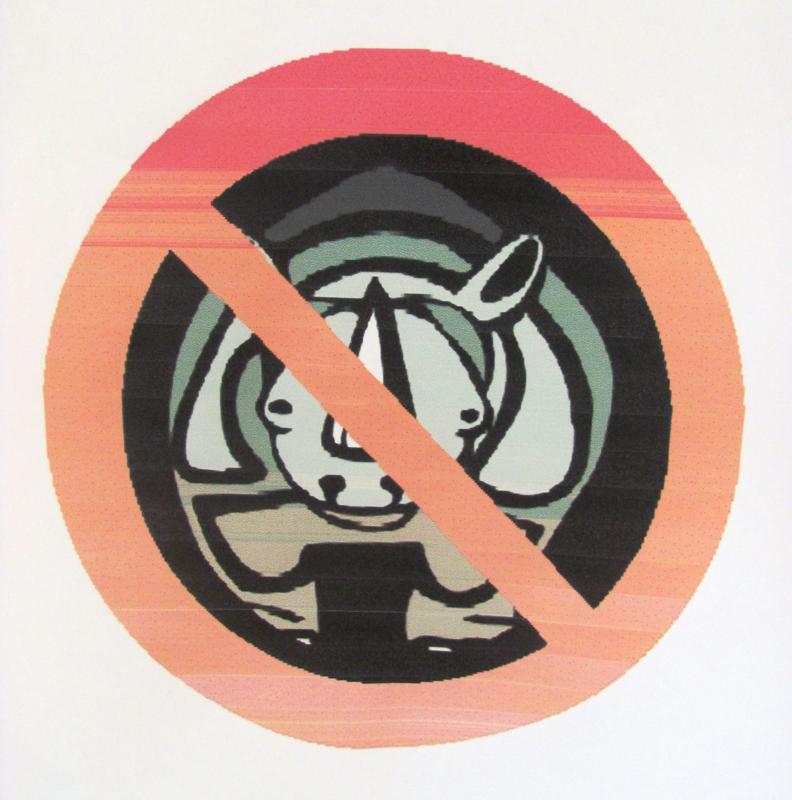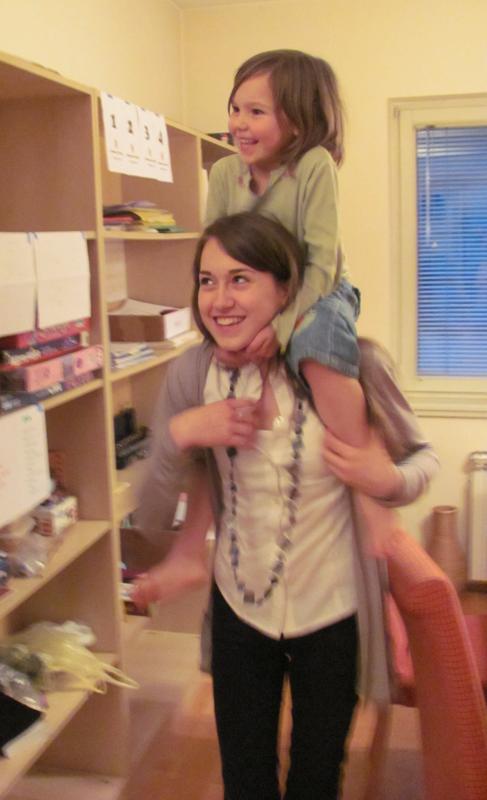We have six children (three now away at college) ages 22, 21, 18, 16, 7, and 5. For 6 of the past 9 years we’ve lived abroad, sometimes in places where ours is the only LDS family in the country. We love FHE. 
PHILOSOPHY
Our goal isn’t to always have a perfect FHE but to be perfect at always having it. That slow accumulation of minutes together, stretched out over months and years, matters.
More than anything else, we want the tone of FHE to be positive—warm, supportive, and fun. My husband does a remarkable job of setting that tone by the way he conducts FHE. He jumps up and, carnival-barker style, shouts, “Welcome one and all to our Pimentel family home evening…” and so on. It always makes us giggle and starts our evening with high energy and silliness.
FHE is just for us. Once when we had just moved into a new ward and were trying to meet people, we invited another family over for FHE. At the end of the evening, I felt closer to the parents of the other family but had no idea what my own children had been doing all evening. After that, we decided that we can get to know other people and fellowship investigators on days other than FHE.
We (teenagers included) love Monday. We all stay home. We don’t answer the telephone. It’s the best night of the week.
NUTS AND BOLTS
FHE CHART Nearly twenty years ago, before any of our kids could read, we designed our FHE chart. We fondly refer to it as The Only True Family Home Evening Chart on the Face of the Earth. 
Even the smallest child can “read” our chart. Our heads are self-portraits on popsicle sticks (how sad to never again have a two year-old’s self-portrait circling our chart!) Each head moves around week by week from body to body. Whatever the body is doing indicates that person’s FHE assignment.  We keep the college kids’ heads so whenever they’re home, we can put them back into the rotation.
We keep the college kids’ heads so whenever they’re home, we can put them back into the rotation.
ABOUT OUR LESSONS Lesson is not the most important part of FHE . The tone of the evening is. Which is not to say that we don’t address tough issues in our lessons. When David or I teach, the lesson often focuses on problem behavior we’ve observed at home. But it would destroy the warm tone to make the “problem child” feel defensive, so we talk about the problem behavior in terms of eternal principles instead of daily irritants.
For example, when a child in our family was whining a lot, we had a lesson in which we read about Laman and Lemuel’s continual murmuring and then discussed how we can choose how to respond to bad things in our lives. To insert whimsy and make everyone smile, my husband created this logo to remind us not to be “whinoceroses.” .
It still hangs on our wall.
Our principle-based discussion often moves me to a spirit of repentance. Almost always I realize that I am more of the problem than I had admitted to myself.
LENGTH OF LESSON Short. Usually five minutes or less.
HOW WE PREPARE LESSONSGenerally, kids pick their own topics. We have, at various times, used the FHE resource book, Teaching the Scripture Readers Topics and Themes manual, the Nursery Manual, suggestions in the Friend and the New Era, Faith in God guidebooks, Personal Progress value experiences, and Duty to God requirements as the springboard for lessons. We’ve done series of lessons on the Ten Commandments and on the Articles of Faith. When someone goes to all the work to make a great visual aid, we save it in our filing cabinet and other kids will give the same lesson over and over.
Usually, though, we discuss a scripture or a scripture story that means something to the person giving the lesson. And the lesson almost always involves some kind of interactive game, often involving acting out scripture stories or other illustrative tales, like this depiction of the watchman in the tower.  GAME OR ACTIVITY We play a game after lesson and before dessert. Younger children seem to like Sardines or Hide-and-Seek the best. And they’ve been remarkably slow to figure out that their tired dad usually hides in his own bed.
GAME OR ACTIVITY We play a game after lesson and before dessert. Younger children seem to like Sardines or Hide-and-Seek the best. And they’ve been remarkably slow to figure out that their tired dad usually hides in his own bed.
ABOUT DESSERT
FHE dessert is a big deal. I save time on my schedule Monday to shop for or to cook with whoever is in charge of dessert, and I try hard to say yes to whatever they propose for dessert (though I’ve also often been very persuasive in convincing a child that the flavor of ice cream currently in the freezer is the dessert they wanted). 
HOW FHE HAS BLESSED OUR FAMILY
One of my older daughters points out that FHE was always a place in our family life where children had control. They could teach lessons that mattered to them, choose activities that they wanted to do, and cook desserts that they liked.
She adds, “FHE also necessarily brought us into dialog about intangibles, which sometimes happened spontaneously…but usually not… so we had those conversations a lot more than we would have otherwise, including when we didn’t want to have them.”
Partly because FHE is so ingrained in our family life and partly because the tone of FHE is always positive, our teenagers have been willing participants. I had imagined that we would slowly transition to different topics as our children aged, but since we have two young children now, the teenagers have instead taught, very ably, basic gospel principles to their little brother and sister. In retrospect, this has been a good thing, keeping our family focused on what matters most.
I realized that I have a strong testimony of the power of FHE when we first moved overseas. Our move should have been highly disruptive and upsetting for our kids. We moved to a country scarred by a war that had only recently ended. Our kids didn’t have the familiar support of school because we were home-schooling them. They didn’t have the familiar support of a ward or a branch because we were the only LDS family in the entire country. We were there on a short-term, temporary project, and my husband didn’t have a job to go back to in the US. They couldn’t even understand the language everyone around them was speaking. Yet despite all these stresses, our kids thrived.
We pondered why that should be and finally decided that while everything on the outsides of our family’s lives had been yanked away—peaceful neighborhood, secure job, familiar Church and school—everything that was central to our family’s life was still in place—family prayer, family scripture study, and FHE. The other stuff, we realized, really did not matter in any important, eternal way.
GREATEST HIT LESSONS (thanks to my kids who responded to my poll)
· One by one, our three year old asked us each to come and stand next to her in front of the group. When a new sibling or parent was standing next to her, she would say, “[Name of person] is a child of God.” It took probably ninety seconds to give the whole lesson but was deeply moving to all of us, including her teenage siblings. (lesson straight from the nursery manual) · Little slips of paper with nice things to say and bad things to say—you put the bad ones in the garbage and the nice things into a ”treasure box.” · Grandma sent us a laminated picture of a little boy. We tell a story where every time he does something bad we smear peanut butter on him. As he repents, we clean it off. · Pixie-ing (aka doorbell ditching). · Writing thank-you notes (as part of a “gratitude” lesson after Christmas each year). We all collaborate on the notes, each adding a couple of sentences and/or a picture to the grandmas or other relatives who’ve sent us gifts. · Writing lists of things we’re thankful for. This is another “gratitude” lesson the Monday before Thanksgiving each year. We make a list of everything wonderful that’s happened in the last 12 months. We have kept these lists over the years, in a massive and sloppy “Thankful Book” that is a treasure. It is always fun to read previous years’ lists and remember how much we’ve been blessed. · Dad’s lesson (and his clever signs to hang around the house) about not being a martyr. · The time Dad taught everyone how to close the toilet lid quietly.
Thanks Annette!
Don’t forget that on Monday I will be hosting a blog hop in which you can share your own post on “This is What Family Home Evening Looks Like at My House”. Everyone who participates in the blog hop will be eligible to win one of these great prizes.







Love it! How encouraging to see a successful family with years of practice under their belt! Love this idea Heather…and I look forward to reading more!
Wonderful ideas, and so gratifying to know that there are others with the same philosophy. FHE can be fun! And now, since it is Monday evening, I guess I better call our family together 🙂
I really enjoyed reading a real post about FHE-it was lovely. Thank you!
Great ideas!!!
I especially love that the tone is the important part! I will remember that.
The dessert looks lovely! I like the short lesson. Mood/tone makes a world of difference.
Thanks so much for this great idea. I really felt the spirit reading Annette's story. Although we're active LDS members, we struggle with FHE a lot, as in I couldn't tell you the last time we had it, and in our 10 years of marriage we've probably had it as many times as I have fingers on my right hand. This makes me want to try harder to do better!
Thanks, Annette! I will refer to this often. Nathan has brought many of these elements to our FHE. Thanks for setting such a great example for our family.
Ok, seriously, that is THE BEST FHE chore chart…ever…EVER!!
And I love that Dad taught everyone how to close the toilet lid quietly!
One of our favorite fhes from growing up was when we/I made my little sister dress up in a leotard and pretend to be cupid while shooting arrows at everyone in the family.
Classic.
thanks for sharing! And what a wonderful idea, Heather!
Excellent! I really appreciate these examples and the series on what different families' FHEs look like since I've been really struggling to figure out what really fits and works for us. Thanks for doing this, Heather! And thanks for the great ideas and examples, Annette. 🙂
This was so inspiring! Just what I was looking for as we re-vamp our FHE. Thank you for this glimpse into your family life, keeping it real, and highlighting the wonderful blessings of FHE!